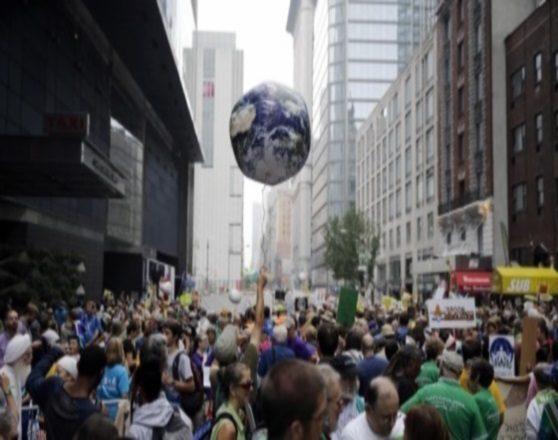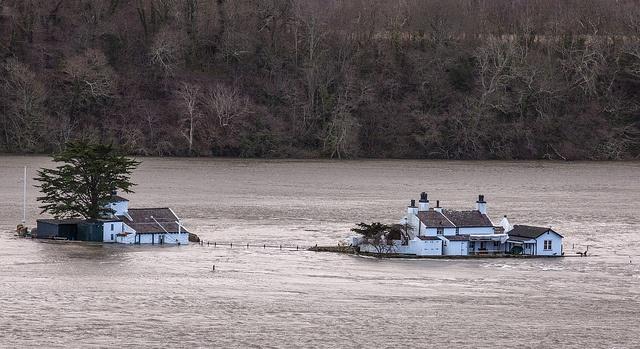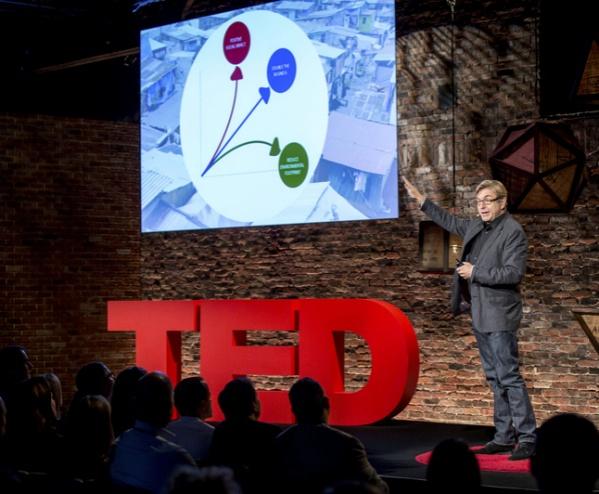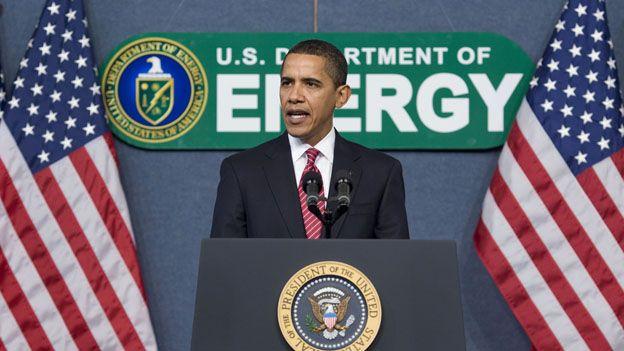Business Sustainability Prompted by Activism in 2014


By Michael Green
The Harvard Business Review (HBR) recently posted a “top 10” list of the most important sustainable business stories of 2014. Given the gravity of the situation, it’s appropriate that the first five stories are around climate change (although it’s a little troubling that the No. 1 story for sustainable business is described as “climate change is now.” Wasn’t that a top story of 1999? Are sustainable businesses really just figuring this out?)
For health and environmental advocates, an even more compelling aspect of the HBR 2014 review is the number of top stories showing that businesses are changing in response to citizen activism. Five of the 10 stories reflect issues that were first brought to light by grassroots activism, including four that directly relate to activists’ role in influencing corporate behavior.
- HBR notes the joint movement by retailers including Target and Walmart on toxic chemicals used in personal care products sold at their stores. This business alliance came about following years of advocacy by our organization and hundreds of others allied as the national “Mind the Store” campaign.
- HBR notes several businesses that are taking steps for a living wage for their workers, despite the failure of revised minimum wage regulations. The living wage movement has long highlighted the income gap and connected hundreds of organizations who are advocating for equality.
- According to HBR, the massive citizen movement on climate change involving large national groups and hundreds of small grassroots networks is a social change movement that business needs to take seriously. HBR notes that businesses that respond to citizen action with truly renewable, healthy solutions will win both in the public eye and in the marketplace.
- Social media and youth activism are highlighted in the 2014 story of Sarah Kavanagh, a teenager from Mississippi whose online petition culminated in corporate change at Coke and Pepsi (our organization had a similar effect on the companies when our work exposed a cancer-causing chemical in their colas).
- HBR notes the increasing corporate attention to the problem of food waste, an issue activists have been tackling for years: College student activists from the Food Recovery Network have created a national coalition on campus food waste, while Food Shift offers innovative programs for making food surplus “problems” into resources for jobs and community empowerment.
Other 2014 stories missing from the HBR list show that citizen advocacy works to influence business sustainability. In the most recent example, New York’s ban on fracking was won following mass pressure from grassroots groups across the state. The ban presages a boon for renewable businesses: New York has already announced support for “Community Shared Renewables,” an innovative approach to making solar and other clean power choices available to renters and millions of other energy users in the state, and has committed nearly $1 billion to solar power.
We’ve also seen grassroots victories in the movement for safer food and farming in 2014. Vermont adopted the nation’s first law requiring labels on genetically modified (GMO) food in 2014, and Hawaii voters passed a ban on cultivation of GMOs a few months earlier. After winning the withdrawal of the strawberry pesticide methyl iodide in 2012, safe food advocates continued to call for safer strawberries in 2014, rallying consumers, farm workers, health and environmental activists together against the use of the toxic pesticide chlorpyrifos. Advocates also celebrated the U.S. Fish and Wildife Service’s decision to ban GMO crops and bee-killing pesticides from the country’s National Wildlife Refuges.
In 2015, look for more businesses responding to grassroots health, environmental, worker rights, consumer and social media advocacy. The trend is clear: Where activists lead, business will follow.
Michael Green is Executive Director of the Center for Environmental Health.
New York State Wineries Dodge a Fracking Bullet ... Or Maybe Not


If you heard that loud sighing sound coming from New York state earlier this month, that was probably a sigh of relief as Gov. Andrew M. Cuomo finally agreed to a statewide ban on fracking. The ban followed the release of the state's Department of Health study, which basically concluded that the known unknowns of this unconventional method of drilling for natural gas amounted to a significant potential for adverse public health impacts that could not be ignored.
We're also guessing that business considerations came into play. In the past, fracking was generally confined to thinly populated areas of the western U.S. Now that it has become more common in the more heavily developed Northeast, fracking has been bumping up against pushback from stakeholders in established, local businesses. News of the fracking ban was probably most welcome by New York's thriving upstate tourism and agriculture sectors, both of which come together in the growing popularity of winery tours.
However, the cheering had barely died down before news items from communities in New York, Pennsylvania, Virginia and Ohio reminded us that the fracking operation itself is only one part of the complex natural gas lifecycle. New York's wineries are not out of the woods yet. When you consider the transportation and storage issues involved in getting natural gas out of the ground and into market, additional risks for local businesses emerge. The fracking ban does not address those risks.
New York fracking risks: Natural gas storage
One thing to keep in mind is that along with the fracking boom has come an increase in growth all along the transportation stage, which includes a growth in natural gas storage facilities.
Last year we took note of one such storage project: the proposed expansion of a natural gas storage facility using salt caverns in the heart of New York's Finger Lakes wine country.
That project is under the auspices of Missouri-based Inergy LP. While Inergy claims that the caverns are sound, local organizations have called attention to problems with the structural integrity of the formations.
Local activists have also mobilized against the Crestwood salt cavern storage facility for natural gas just north of Watkins Glen. Citing concern over potential methane leaks, a group affiliated with We Are Seneca Lake blockaded the facility last week, capping a two-month civil disobedience campaign that has already racked up 170 arrests.
Fracking ban or not, natural gas from other states will continue to make its way into New York, so expect more attention to focus on those storage facilities.
Virginia fracking risks: Transportation
Another form of pressure that upstate New York residents and businesses could face is the construction of additional natural gas pipelines.
The natural gas pipeline issue came to the fore last week, when our friends over at FuelFix.com reported that landowners are resisting the efforts of Dominion Resources to build the new Atlantic Coast natural gas pipeline. The route goes through West Virginia and North Carolina as well as Virginia, affecting 3,331 properties.
According to FuelFix, so far the company has filed suit against 47 landowners in Virginia who have failed to grant Dominion access to survey the pipeline route through their property. Another 50 or so lawsuits are anticipated in the near future.
While relatively rare in comparison to the many thousands of miles of pipe webbing the U.S., natural gas pipeline disasters do happen, and the risk potential clearly undermines the efforts of local economies to build a bucolic, healthful brand.
Pennsylvania fracking risks: Wastewater
Pennsylvania illustrates another risk feature in the natural gas lifecycle, which is how to account for the many millions of gallons of wastewater generated by fracking operations.
Frequently, fracking wastewater is shipped offsite in tanker trucks and transported across state lines for disposal.
That disposal could include use of spent fracking brine as a road de-icer, so even if New York state bans fracking it could still serve as a disposal resource for fracking wastewater.
That opens up two cans of worms. In addition to the impact of spreading wastewater on open roads, the Pennsylvania situation draws attention to the emergency response hazards posed by an increase in tanker truck traffic.
On Dec. 26, the Star-Beacon, an Ohio newspaper, zeroed in on the fracking wastewater transportation issues that have beset Pennsylvania. Here are two key snippets:
"Often truck cargo isn’t labeled. Much of the byproduct from drillers’ fracking process — including the briny, chemically laced water — is classified as 'residual waste.' Drilling waste has been exempt from federal hazardous waste rules since the 1980s, according to the U.S. Environmental Protection Agency. So there are rarely placards on the trucks.""The passage of those trucks is often fraught. Many drivers hail from Texas or Oklahoma – places without the snow-slicked mountains typical of Northern Tier winters ... And accidents are more and more common."
Ohio fracking risks
The Star-Beacon's interest in Pennsylvania fracking is tied to the concerns of its readership in Ashtabula County. Known for its vinyards and covered bridges, this Ohio county shares similarities with upstate New York communities that have developed an economic foundation that is incompatible, to say the least, with fracking.
Nevertheless, fracking could come to Ashtabula County. Back on Nov. 9, the Star-Beacon reported on some of the economic benefits that could come along with it, such as the sale of drilling rights and an increase in hotel bookings.
We're guessing that the Dec. 26 article will raise plenty of red flags among Ashtabula stakeholders in the winery and tourism sectors.
However, as with the situation in upstate New York, a local or even a statewide ban on fracking doesn't necessarily insulate a community from impacts related to transportation, storage and disposal operations.
Image (cropped): By Stephen Depolo via flickr.com, creative commons license.
Let's Change Your Name to 'Single': The Impact of Defining Homeless People By What They Lack


What is the most important thing that you would like to have but lack?
Perhaps you don't have a significant other. Or a job that fulfills you. Or maybe you have not traveled very far.
Whatever it may be in your case, odds are that what you lack does not define you, at least in the eyes of others. You are a friend, you are a colleague, you are a runner, you are a painter, you are funny, you are you. You may lack something very important, but it is probably not your primary identity.
Unless you are homeless.
People who live on the streets -- people like Silas, Jessica, Adam and my Uncle Mark, before he passed away -- are defined by what they lack. During their period(s) on the streets, their identity is cemented. Can you imagine being described by others primarily as a "housed" person? This would feel dehumanizing and reductionistic, and yet it is still something you possess. Being labeled solely as "homeless" is extremely awful in and of itself.
A large percentage of the homeless population hides the fact that they are homeless. They want to retain a modicum of dignity, since homeless people are seen as (in the words of some of the homeless individuals I've spoken with) "garbage," "pieces of ****," "lazy," "worthless," "bums."
At the Homeless GoPro Project by NearShot, we have worked with 12 homeless autobiographers so far to help them capture their stories. I would estimate that at least half of them mute their perception as a homeless person on most days. These are "not some deranged lunatic or hopeless addict yelling on the street corner." These are our brothers, sisters, mothers, fathers, sons, daughters, friends and neighbors.
With roughly 1 out of every 3 Americans only one or two paychecks away from homelessness and 600,000 people homeless on any given night, most people who are homeless are hidden among us.
We have launched a campaign to bring this issue out of the shadows and help capture #100stories of homelessness across America. We are mobilizing people around the U.S. to reconnect with homeless individuals and local service providers in their communities and engage through Coffee Chats and film sessions. We envision a world where homeless people are not defined by what they lack, but are celebrated as people, as invaluable as you or me.
All of us will experience rough times in life. Let's stop ostracizing our neighbors during their trials and start treating each other with dignity. People want to get involved in this issue but don't know how: We offer a way to engage with homeless people in your neighborhood that doesn't involve hand-outs but humanity. By starting with empathy, love, relationships and storytelling, we open the door to a groundswell of support on this issue, to fight for the housing-first and work-first policies that will end chronic homelessness in our society. It starts with storytelling and leads to societal change.
Everyone is someone's somebody. Support our campaign and make a difference for your neighbors in need today.
[embed]https://www.youtube.com/watch?v=PqZYBiymEEs[/embed]
5 Places Transformed by Climate Change in 2014


This past year could be called a test case for climate change. Scary as that sounds, 2014 has seen a broad spectrum of quirky events, ranging from drought and flooding to the loss of sea ice and glacier mass. There’s been some oddly good news as well: Some species continue to find their own way to adapt to climatic changes, opting for new environmental zones or alternative food sources. What will be our new way of adapting? Will we lead the pack, or follow suit?
Flood vs. secede? ... Hmmm
In Florida, one small city made headlines this year when it threw down the gauntlet and announced it was seceding from the state. That might not have been what Gov. Rick Scott expected when he announced his bid for re-election as one of the country’s biggest hold-outs against climate change, but it definitely garnered attention. Years of increasing flooding due to rising tides and Florida’s unique porous topography were the tipping point for the embattled city. The recent news that South Florida would probably be under water in a couple of centuries probably didn’t help. But with a freshly signed resolution to secede now making its way through South Florida’s 24 county governments, the city of South Miami may just get its wish for redress over the definitions of climate change in sunny South Florida.
The $400 million home relocation
In 2013 we reported on a tiny town called Kivalina, Alaska, which sits above the arctic circle and has not only lost land mass to climate change, but also much of its traditional way of life. Unusually warm temps and loss of sea ice has placed the town of 370 inhabitants at risk, as the tiny land spit is buffeted by winds and storm surge. Local sources estimate that the town has lost a third of its land mass in recent decades, forcing residents to admit that relocation may be necessary in order to save their traditional way of life. The General Accounting Office estimates that relocation could cost as much as $400 million, however, given the shrinking coastline in other areas of the region as well.
In 2008 Kivalina sued ExxonMobil and 23 other oil, power and coal companies for global warming, which the city said was brought on by carbon emissions. The residents didn’t win; the court punted the issue, saying that global warming was a political matter better regulated by Congress. That, of course, has yet to happen.
California: Year three and counting
It’s been a wild ride in California this year. Just about every region of the state has faced environmental changes, from bankrupting droughts to inundating floods. Lack of rain forced farmers to fallow their land and forced ranchers into bankruptcy. It also caused considerable problems for organic dairy farmers. Federal funds amounting to $100 million were called in to help ranchers, while Gov. Jerry Brown allocated $687.4 million for drought relief. The funds came from the state’s Greenhouse Reduction Fund and voter-approved bonds.
Native American tribal communities also received assistance from the Environmental Protection Agency to combat climate change. Approximately $43 million was allocated to Southwest tribes to bolster water resources and infrastructure in remote, parched areas of the state.
The arrival of winter storms in December is not expected to alleviate stress from drought, which is heading into its fourth year.
One century and 7,000 homes
With record storms and flooding besieging the U.K.’s coastlines in past years, the government’s Environment Department has estimated that as many as 7,000 residences may be reclaimed by the sea in the next century. At greatest risk, of course, are homes and businesses that are vulnerable to storm surge, but last year’s widespread flooding in cities has heightened awareness that Mother Nature’s reach isn’t limited to coastlines. The tourist haven of Cornwall, England is expected to lose the most homes to the sea in the next 50 years. More than 750 homes in England will face risk in the next 20 years.
Where climate goes, so go the trees
We can’t close a New Year’s post on a dismal note, so we have this upbeat news to share: Earlier this year scientists found that some species are coming up with their own innovative answers to climate change. The polar bear and a wide selection of butterfly subspecies have developed intuitive ways to deal with changing temperatures and seasonal needs. For the polar bear, retreating to land more frequently and seeking out new food sources has allowed some animals to adapt to disappearing sea ice. The checkerspot, quino and comma butterflies have made their own migratory changes, opting for cooler climates. Trees, too, have found ways to adapt in Costa Rica’s drought-hit rain forests. Tropical zones in some areas are moving “up,” seeking more amenable environments for survival during what may likely be, another year of climate evolution.
Image of drought: Planetlight
Image of flood: Adrian Kingsley-Hughes
Nominate Your 2014 Sustainability Winners and Losers


Have you been grinding your teeth all year wishing you had a forum to tell it like it is on who is helping or hurting the adoption of sustainable solutions to economic growth and enhanced human health? Here is your chance! The following are some of my observations. But more importantly, post what you think in the comments section below this article.
2014 in review
2014 was definitely a year of conflicting results in terms of sustainability. Dishearteningly, the World Meteorological Organization reported a “carbon surge” in climate-changing emissions to 142 percent of pre-industrial levels. The Intergovernmental Panel on Climate Change analysis raised an alarm that this carbon surge was approaching a point of “severe, pervasive and irreversible impacts for people and ecosystems.”
2014 also saw milestone growth in the green economic revolution: American consumers, lead by the millennial generation, are buying into a green economic revolution that in 2014 generated trillions of dollars in global commerce and investments. But the question raised in 2014 is whether this green economic revolution will be a case of too little, too late.
So, with these conflicting results who were 2014's sustainability winners and losers?
2014 Winners
2014 saw the emergence of real winners measured by their ability to advance a sustainable economy and environment. Here are four of these “sustainability winners:”
Solar. Solar's 70 percent price drop was the sustainability story of 2014. Deutsche Bank issued a 2014 report projecting that this price decline pace will make rooftop solar price-competitive with utility-supplied electricity in all but three states by 2016. 2014 found homeowners in states like California and Hawaii reducing their electric bills by approximately 40 percent with zero onsite emissions from installing rooftop solar. 2014 also marked significant steps toward Zero Net Energy (ZNE) building designs driven by California’s adoption of ZNE building codes. Enabling this mega-shift was economies-of-scale implementation in battery and smart-building technologies that hold the potential to duplicate solar’s path to price competitiveness.
Organic food. Consumers cannot correctly define how a food is “organic,” but they are buying it at a record pace driven by their growing awareness of the link between industrial foods and the obesity/diabetes epidemic. The consumer’s tsunami shift toward healthier foods is driving down the sales of McDonald's and Coca-Cola while propelling the stock values of Chipotle and Krogers to record levels.
CAFE regulations. The American consumer, along with China, are the two forces driving down the price of oil and pump price pain. Americans are buying more fuel-efficient vehicles in large part due to CAFE regulations that mandate higher “fleet” MPG results for automobile manufacturers. This increased fuel efficiency is reducing oil demand and forcing oil suppliers to slash prices to maintain marketshare. CAFE regulations are achieving their goal of reducing consumer costs and global warming emissions.
Elon Musk. 2014 marked the year Musk became the poster person for the green economic revolution. His vision for rooftop solar and electric cars has achieved commercial success. He is being joined by a growing number of CEOs with companies like Apple, Walmart and Ford that are using sustainable best practices to cut costs, grow product sales and reduce environmental impacts.
2014 Losers
2014 was also a year of regression and stagnation in the development of a sustainable economy. Even though most Americans now believe human generated climate change is real and damaging they place a much lower priority on climate change compared to product price competitiveness in deciding what to buy and who to buy from. 2014 also saw massive lobbying by entrenched industries to blunt the competitive threats of healthier products and more sustainable competitors. Here are four 2014 “sustainability losers:”
Millennials. The most recent national election was won by “none of the above.” Sixty-six percent of voters did not vote. The millennial generation was a no-show. Their non-participation in 2014 may make them losers in terms of how Congress addresses their core desire for a sustainable future.
Electric utility industry. The electric utility industry has made revenue preservation their strategic issue as solar, batteries and Zero Net Energy building technologies gain price competitiveness. 2014 marked a clear push by the industry to protect their revenues through rate designs that erode the ability of clean technologies to compete on price. Except for a few utilities, the industry is using its political power and regulatory expertise to insure that the electricity used in the U.S. flows through their meters and that this electricity will mostly be generated through their fossil-fueled power plants that are significant sources of climate changing greenhouse gases.
Boomer generation. While their children are in pursuit of a sustainable future, the boomer generation is stumbling toward massive government subsidies because they have failed to save for their retirement. The boomer generation also continues to be the largest consumer group for full-size pickup trucks and higher MPG vehicles. Seventy-five percent of boomers did vote during the last election as they look to government to sustain their lack of prudence in personal finance and environmental impacts.
Congress. Is this kicking an obvious dead horse? Less than 10 percent of us believe Congress is doing a good job. 2014 was a Congressional non-event in terms of legislation supportive of a sustainable economy and environment. With the massive lobbying by entrenched industries, the fear is that 2015 could produce legislation that erodes the path to price competitiveness for sustainable technologies and best practices.
Nominate your 2014 winners and losers!
Now it's your turn. Do you have a business or organization you want to recognize for their 2014 sustainability achievements? Or have you been grinding your teeth all year wishing you had a forum to tell it like it is? Here is your chance! In sixty words or less please submit your nomination for a 2014 sustainability winner or loser by posting in the comment section below this article. If we get enough posts I will write a follow-on article about your nominations. So brag or vent away!
Image credit: Flickr/madmarv
Bill Roth is an economist and the Founder of Earth 2017. He coaches business owners and leaders on proven best practices in pricing, marketing and operations that make money and create a positive difference. His book, The Secret Green Sauce, profiles business case studies of pioneering best practices that are proven to win customers and grow product revenues. Follow him on Twitter: @earth2017
California Plastic Bag Ban Could Be Delayed Until Fall 2016


California Senate Bill 270, passed by the state legislature and signed into law in September, would ban many retail stores from dispensing single-use plastic bags as of July 1, 2015. But in another example of a special interest perverting democracy when it does not get its way, the Plastics Industry Trade Association (SPI) has announced it has collected over 800,000 signatures to qualify for a statewide up-or-down vote in November 2016. Once that tally is confirmed, the July ban would be postponed until the following year.
You probably saw the sign gatherers at stores such as Target, where I was greeted with an appeal to sign my name and take sides with the “American Progressive Bag Alliance” in order to reverse this “backdoor deal” -- until the fellow with the clipboard saw my reusable bags. “Oh, you’re one of those,” he said with an eye-roll, because as you know, someone like me who likes to wear labels, shops at Costco and makes mac-and-cheese out of a box (when no one is looking) is such a hippie.
So why do I support the bag ban? Why should California stick to its guns?
If plastic bags were 100% recyclable, I would also think SB 270 would be silly and a waste of time. The SPI insists it is a vanguard of plastics recycling in the U.S., but the statistics just do not back up the talk. At best, only 12 percent of plastic bags, wraps and sacks were recycled in 2012; overall plastic waste was recycled at a rate of nine percent. Sure, the quick answer is to pass the buck to manufacturers, retailers and consumers and charge them with the responsibility of recycling. But if plastic bag recycling made economic sense, it would become the norm.
Unfortunately, that is not the case. As one Maine newspaper reported, Portland city officials weighed the costs and benefits of recycling plastic bags. Many plastics can fetch up to $500 a ton; paper a maximum of $100 a ton. But plastic bags at best can reap $5 a ton—and that is a lot of plastic bags, not including those that get stuck in conveyer belts and gears as most businesses and municipalities have adopted co-mingled recycling.
If plastic bags had value, as in a dime or quarter fee per bag, that could boost incentives all around for recycling. But that is not occurring anytime soon. Cities are tired of the excess work involved in burying or recycling them, so they are banning them.
Another laughable objection the SPI has is its complaint about the alleged background deal between grocers and unions to ram SB 270 through the legislature: as if it is terrible for supermarket chains to profit off the sales of bags at a dime a piece. What the plastics industry does not talk about is the cost to taxpayers to landfill plastic bags, clean them up from storm drains and the cost to retailers.
The idea that the plastic industry will suffer from this bag ban is as equally absurd as out-of-state interests using their influence to reverse a law passed by legislators who were elected by Californians. Indeed, plastic has its role in preventing the spread of infectious diseases; making everything from factory equipment to vehicles lighter and more efficient; and has great qualities ranging from water resistance to adhesiveness. But plastic bags offer more mess and clean-up than value, so they are going away. If the plastics industry had taken more responsibility for their product, no laws would have been enacted in the first place. We moved on from the decline in buggy whips and slide rules; we will do the same with less plastic bags around. So let the stores profit; and get in the habit of keeping reusable bags in the trunk. We’re all better off with less trash around.
Based in California, Leon Kaye has also been featured in The Guardian, Clean Technica, Sustainable Brands, Earth911, Inhabitat, Architect Magazine and Wired.com.
Image credit:Leon Kaye
My 2014 Sustainability Moment of Optimism


Looking backwards at 2014 I can find plenty of events that made me more optimistic. At the same time I can also find plenty of events that made me more pessimistic.
I’m probably not the only one in this space having these mixed feelings, but at the end of day I'd rather stay optimistic (how otherwise can you drive change?), which is why I’d like to share with you the most optimistic moment I had in 2014 when it comes to sustainability.
Now, let’s be clear – when I talk about optimism, I’m not talking about burying your head in the sand or daydreaming about a utopian future, but about a very realistic “hopefulness and confidence about the future,” which is exactly what I found in September at TED@Unilever.
This day long TED-curated event, which took place in New York, featured a diverse group of speakers from across Unilever. What I liked most about it was that, unlike many corporate events, this one didn’t try to present a sugary version of the reality when it comes to sustainability. It kept a positive vibe (after all it’s still a TED event) but at the same time didn’t ignore the hardships, obstacles and frustrations shared by those seeking to advance sustainability.
This approach was demonstrated very early at the event with the first speaker, Keith Weed, chief marketing and communication officer at Unilever, who presented the company’s vision and progress on sustainability.
Weed shared with the audience some interesting answers to a question he raised: “How do companies like Unilever, and others like Disney, Ikea and Nike, start trying to make sustainable living commonplace?” He talked, for example, about the need to mainstream sustainability through the whole company and how Unilever did it by closing its corporate social responsibility (CSR) department and launching Unilever’s Sustainable Living Plan.
Weed then went on to describe how the company publicly reports its progress annually against 50 time-based targets: “Not only where we are achieving targets but where we are missing them too. We are learning as we go, and we need the help of partners and stakeholders to close these gaps.” He also made the argument that the cost of inaction is greater than the cost of action: “So, when people ask me what the business case for sustainability is, I say – I would love to see the case for the alternative.”
You don’t have to be an avid TriplePundit reader (although we hope you are!) to know that Unilever is one of the leaders when it comes to corporate sustainability. Nevertheless, it was inspiring to hear a narrative that is still so rare in the corporate world -- one that is about making sustainability not just part of the organization’s strategy but the organization’s strategy, continuous experimentation, being honest about not having all the answers and very clear why those going on with business-as-usual should be on the defense, not the ones advancing sustainable business.
And this was just the beginning. As you can imagine the day was full of inspiring and interesting speakers, presenting their stories and insights on sustainability. I found almost all of them very exciting, but those that truly filled me with optimism were the ones focusing on the human factor, reminding me what Ezio Manzini once said about how we could see the 7 billion people on the planet today or 9 billion people tomorrow not as problems but as people with capabilities, who could be intelligent operators. The challenge Manzini said is to create a system catalyzing the best, not the worst, out of the people.
One example of how you create such a system was the story of Greyston Bakery that was presented by its CEO, Mike Brady. Based in Yonkers, New York, this is not just a bakery producing great baked goods (try their incredible brownies!), but also a living example of how business success and social justice are two sides of the same coin. As Brady explained, their goal is making high-quality, profitable products and helping eradicate poverty in southwest Yonkers. And they do it very simply by applying an open hiring model, or in other words employing the unemployable. “Anyone that comes to the front door of the bakery gets a job,” Weed explained their policy. “We don’t ask him any questions; we don’t ask for the references; we don’t try to interview them. We’re only interested in what they’re capable of doing in the future.”
If the audience needed an example to better understand what Brady was talking about, it received it from Dion Drew, who told us how he wanted to change his life after getting in and out of jail for years for selling drugs, but had no place to start as no one wanted to hire him -- until Greyston Bakery gave him a chance. Drew’s story wasn’t the only empowerment story we heard that day – from Rania Bahaa, an environmental specialist at Unilever Mashreq in Egypt, who shared stories on how waste could become a way for people in need to live in dignity to Dr. Myriam Sidibe, who told the incredible story of hand washing with soap, which as she explained “can save over 600,000 children every year.”
These stories and others made me optimistic because they were a reminder of how solutions to the most difficult problems we face are not necessarily about developing new technologies, but about changing norms and behaviors.
It isn’t a simple task either, but if more corporations will finally understand that “you can’t have a healthy business in an unhealthy society” and help catalyze change like Unilever does it’s very much doable. At least this is what I thought that day going home back from TED@Unilever. I hope I didn’t get it wrong.
Raz Godelnik is an Assistant Professor of Strategic Design and Management in the School of Design Strategies at Parsons The New School for Design.
California Law Banning Confinement Crates Takes Effect In 2015


If hens realized the better conditions that Proposition 2, which goes into effect on Jan. 1, 2015, ushers in for them they would be holding celebrations. In 2008 California voters passed Proposition 2 requires egg-laying hens in California to be able to stand up, lie down, turn around and fully extend their wings. In 2010 California lawmakers passed AB 1437 which requires all shell eggs sold in California to comply with Proposition 2, acts as a virtual ban on egg factory cages. California voters approved Proposition 2 by 63.5 percent. At the time the ballot initiative received more votes than any other in American history.
Proposition 2 extends to other farm animals. As the law states, “a person shall not tether or confine any covered animal, on a farm, for all or the majority of any day, in a manner that prevents such animal from: lying down, standing up, and fully extending his or her limbs.” A covered animal includes “any pig during pregnancy, calf raised for veal, or egg-laying hen who is kept on a farm.” That means sow gestation crates, a small space pregnant pigs are confined in, are banned in California as of January 1. Veal crates, a small space calves are housed in, are also banned.
Californians support more humane treatment of farm animals
Californians support more humane treatment of farm animals. A poll by The Humane Society of the U.S. (HSUS) found strong support for cage-free egg production. Most Californians polled (78 percent) believe it’s more humane to raise hens in cage-free environments. Most (79 percent) also think that the more than six years that California’s egg producers have had to comply with Proposition 2 is a “a reasonable amount of time,” and 58 percent would be willing to pay more for eggs from cage-free hens.
“Californians don’t want farm animals confined in cages that severely inhibit their movement and quality of life,” said Wayne Pacelle, President and CEO of The HSUS. “With new farm animal laws soon to take effect, it is our hope that all food retailers in the state buy eggs only from farmers who use cage-free production systems. Cage-free certainly complies with Proposition 2, and it’s the right thing to do and a move broadly supported by consumers.”
Many companies are transitioning away from cruel crates, including Starbucks which recently announced an update to its animal welfare standards. The updated standards include phasing out sow gestation crates for pigs and cages for chickens. Fast foods such as Burger King and McDonald’s have committed to phasing out sow gestation crates as have the supermarkets chains Kroger’s and Safeway. Multinational food chains such as Unilever and Nestle have committed to phasing out cage-free eggs.
Image credit: Matt MacGillivray
10 Ways Politics Shaped the Environment in 2014


The environment and the effects of climate change were at the center of legislative debate in many countries this year. The release of the Intergovernmental Panel on Climate Change’s 2014 draft treatise on global warming helped center legislators’ attention on the task at hand, but some countries still opted for the wait-and-see approach over regulatory fixes.
Here in the U.S., the response was equally inconsistent, thanks in part to a hearty push-back from the oil and gas sector and the gold-rush boom of the fracking industry in several states. But in those areas where climate change, dwindling resources or water issues were a concern, legislative options often took center stage.
The Keystone XL pipeline dilemma
The Senate’s narrow rejection of the Keystone XL Pipeline in November followed years of debate over the merits and follies of the well-publicized TransCanada project. Its journey through the U.S. legal system has been just as circuitous as the proposed 1,200-mile map of pipes and junctures that was, at one time, due to cross watersheds, wheat fields and some of the country’s most environmentally sensitive areas.
Although the House bill to approve the Keystone Pipeline was defeated, Republicans supporting the project have vowed to unearth the issue next year when the party gains control of the Senate.
Minnesota heads back to the books
Few legal rulings would better sum up the bizarre quandaries we seem to face these days when it comes to climate change than the U.S. district court’s say on Minnesota’s New Generation Energy Act. The act, which has been in force since 2007, prohibited power companies from purchasing energy from coal-fired plants unless the carbon emissions were offset.
After North Dakota and several power companies sued the state, the district court ruled that the state’s requirement was a “classic example of extraterritorial regulation” that effectively conflicted with the U.S. Constitution because it impeded the federal regulation of commerce.
It was Michael Noble, executive director of the Minnesota nonprofit Fresh Energy, however, who put the outcome into current perspective.
“They won their litigation, but the world is moving on from coal.”
Goodbye coal, hello biomass
In the Canadian province of Ontario, a decade-long plan to rid the province of coal power is coming to a close. In April, it announced that its Thunder Bay plant, which is being transitioned to a biomass-fueled facility, had burned the last of its coal resources. So far, Ontario is the first province or state to phase out coal-burning plants.
In other parts of Canada, however, environmental accomplishments weren’t nearly as notable. The federal Office of the Auditor General published a report this fall politely lambasting the government for its lack of progress on either finalizing or publishing updated regulations that would reduce greenhouse gas emissions.
To ban or not to ban?
This month, New York state joined the growing list of states and communities that have turned down fracking because of health or environmental concerns. Its lengthy investigations determined that the health effects of fracking were undetermined -- and a bad risk for the state populace.
In Texas, where oil companies have had almost unfettered access to the state’s abundant shale resources, one small burg is attempting to do the same. The city of Denton's ban has pitted it against the state’s Railroad Commission, which issues fracking permits to oil and gas companies. According to the town’s attorney, fracking is a “public nuisance” and the city has the right to regulate “noise, increased heavy truck traffic, liquid spills, vibrations and other offensive results.” Other Texas cities are considering similar bylaws.
The U.S. Clean Power Plan
The Obama administration waded into contentious waters this year when it proposed an emissions reduction plan that would allow states to have a say in how and to what extent they reduced carbon emissions. The program encourages states to adopt GHG limits based on their “pollution to power ratio.” Many states have surged ahead of the proposed limits; some are steadfastly holding their ground as the EPA calls for more focus on clean energy.
California’s environmental bounty
California set a new bar this year for regulations that underscored environmental protection. Three of our favorite picks:
- In March, the Department of Toxic Substances Control implemented a new program that reviews substances commonly found in household products. The review process, which is directed at heightening consumer awareness, allows the agency to ban the substances it feels pose a danger to the public.
- The state also implemented the first stage of its revised flammability standard, which now allows furniture, carpet and upholstery manufacturers to drop chemical flame retardants from their products. The new standard relies upon smolder test results rather than the use of toxic chemicals. The changes recognize the efforts of both local and national organizations, including Kaiser Permanente, Safer Chemicals Healthy Families and the Center for Environmental Health in lobbying for changes to California’s regulatory standards.
- The Southern California city of Oxnard's unusual moratorium got headlines last July when it blocked efforts by the Mandalay Bay power plant to upgrade its facility by building a new one. The improved structure received a thumbs-down after environmental organizations were able to show that planners didn’t take rising tides and climate change into account. The city hasn’t said how the ban would protect the power company’s aging facilities, but one thing is clear: The city of Oxnard, once known largely for its smoggy neighborhoods, has climate change, rising risks and future impacts clearly in its sights.
Image of President Obama speaking: Office of the President
Report: Energy Industry Spent $721 Million on Midterm Elections


If there’s one number that says all you need to know about the influence of the energy industry on the nation’s political discourse and direction, it’s $721 million.
A ThinkProgress report last week on the 2014 midterm election cycle found that after adding up direct contributions to individuals and political groups, including spending on TV ads and lobbying, the energy industry spent more than $721 million, citing an analysis from the Center for American Progress.
Not to put too fine a point on it: That huge amount of campaign spending buys a huge amount of influence in Congress. It helped elect fossil fuel-friendly candidates who will set the anti-environment agenda of the next Congress, which will be controlled by Republican majorities in the House and Senate.
In further proof that money always talks, the Center for American Progress noted that benefits for the fossil fuel industry started flowing even before the new Congressional session: “A legislative rider that was quietly attached to a major defense funding bill earlier this month marked a watershed change in the political fortunes of the coal, oil and gas industries and their return to power in Washington, D.C. The rider — which turns the Bull Mountains in Montana over to a Koch-connected, Houston-based company to be strip-mined for coal — is the fossil-fuel industry’s first major payoff from a three-quarters-of-a-billion-dollar investment to secure Republican control of Congress and to set the stage for a pro-coal, pro-drilling and anti-environment agenda in the new year.”
The 2014 midterms saw a wave of Republican candidates elected and re-elected to federal office, and according to ThinkProgress the new bosses will make the environment “the first casualty of the 114th Congress.”
The American Progress analysis — conducted with data from the Center for Responsive Politics and Kantar Media Intelligence — found that the energy industry as a whole gave $84 million to candidates, political parties and political action committees (PACs), spent $163 million on television ads, and paid nearly $500 million to Washington lobbyists in the two years leading up to the elections.
Environmental organizations also spent some big money during the 2014 midterm elections. However, the money was spent differently, and amounted to a fraction of the energy industry’s involvement.
Data from the Center for Responsive Politics revealed that environmental groups spent about $43 million on lobbying, while individual candidates and PACs received a combined $11.7 million since 2012. Unregulated “soft money” contributions made up the bulk of donations, with those groups receiving a combined $87 million from environmentalists.
In 2014, the oil and gas industry represented the fifth-largest lobbying interest in Washington. Electric utilities were the sixth-largest. The environmental advocacy industry did not crack the top 20 list. The number of environmental lobbyists’ clients also lags far behind the number of energy industry lobbying clients.
And then there are the billionaires: The anti-renewable energy Koch Brothers were estimated to have spent anywhere from $100 million to $300 million on the 2014 midterms through their various organizations, while environmentalist, philanthropist (and Center for American Progress board member) Tom Steyer is estimated to have spent about $74 million of his own money.
There’s nothing much new about the influence of oil, gas and coal money on America’s energy agenda, and while there is some encouragement perhaps from the increasing money coming from the green movement, the huge disparities in campaign spending and influence is both dispiriting and alarming. While the clock continues to tick frustratingly on climate change, the next two years in Congress promise to be even more frustrating.
It’s the best Congress pollution money can buy.
Image credit: Our Modern Dilemma by Andrew Hart via Flickr cc